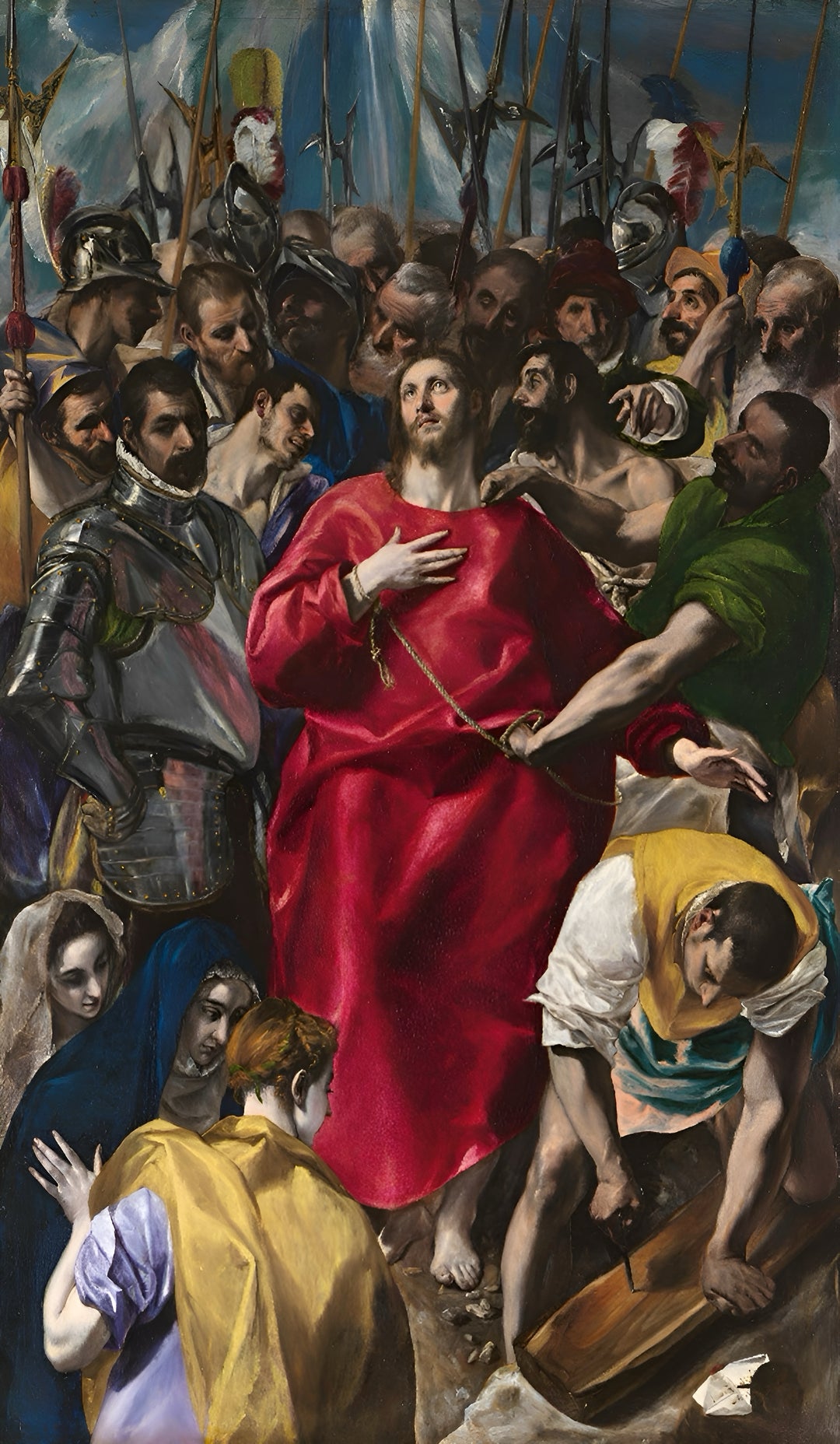
The Disrobing of Christ - El Greco
| Author: | El Greco |
|---|---|
| Title: | The Disrobing of Christ |
| Original location: | Toledo Cathedral, Toledo, Spain |
| Year: | 1577–1579 |
The Disrobing of Christ (1577-1579), painted by El Greco, is a masterpiece that encapsulates both the Mannerist drama and the religious symbolism of the late Renaissance. The scene shows Christ at the moment he is stripped of his tunic before the crucifixion, surrounded by a crowd symbolizing the tumult of humanity, while Christ's vibrant red robe, central in the composition, acts as a visual sign of sacrifice and passion. This painting, intended for the sacristy of Toledo Cathedral, holds added significance as it relates to the relic of Christ's robe kept there, connecting the artistic representation with devotion and liturgical worship.
El Greco, trained in Venice under the influence of Titian and Tintoretto, combines in this work the rich Venetian palette with the dense, ascending compositions of Mannerism. The overlapping of figures, a characteristic inherited from his Byzantine training in Crete, creates a sense of spatial compression that intensifies the drama of the scene. However, El Greco's innovation lies in his ability to manipulate perspective and color in ways that elevate the spiritual narrative above the naturalistic conventions of his time.
This masterpiece, with its elongated figures and emphatic gestures, directly influenced later artists such as Goya, who adopted its emotional expressiveness to depict scenes of great human impact. Likewise, El Greco's emphasis on symbolism and spirituality paved the way for modern movements like Expressionism, where subjective emotion became the central axis of artistic creation.
In historical terms, this work reflects a key moment in the Counter-Reformation, when art was used as a pedagogical and evangelizing tool. The depiction of Christ, with his eyes raised to heaven as he enters his mission, is a visual allusion to the redemptive sacrifice, strengthening the Church's role as a sacrament of salvation for the world. The absence of a natural setting and the attention to detail in the grotesque faces in the background highlight the tension between the divine and the earthly—a struggle ever present.
The canvas also stands out for its painting technique: the use of quick, precise brushstrokes, especially visible in the treatment of Christ's robe, demonstrates the artist's skill in fusing form and meaning. The recent restoration of the work revealed hidden details that reaffirm the complexity of its composition, such as the subtle position of Christ's fingers evoking a gesture of blessing to the one preparing the cross for him amid this terrible humiliation.